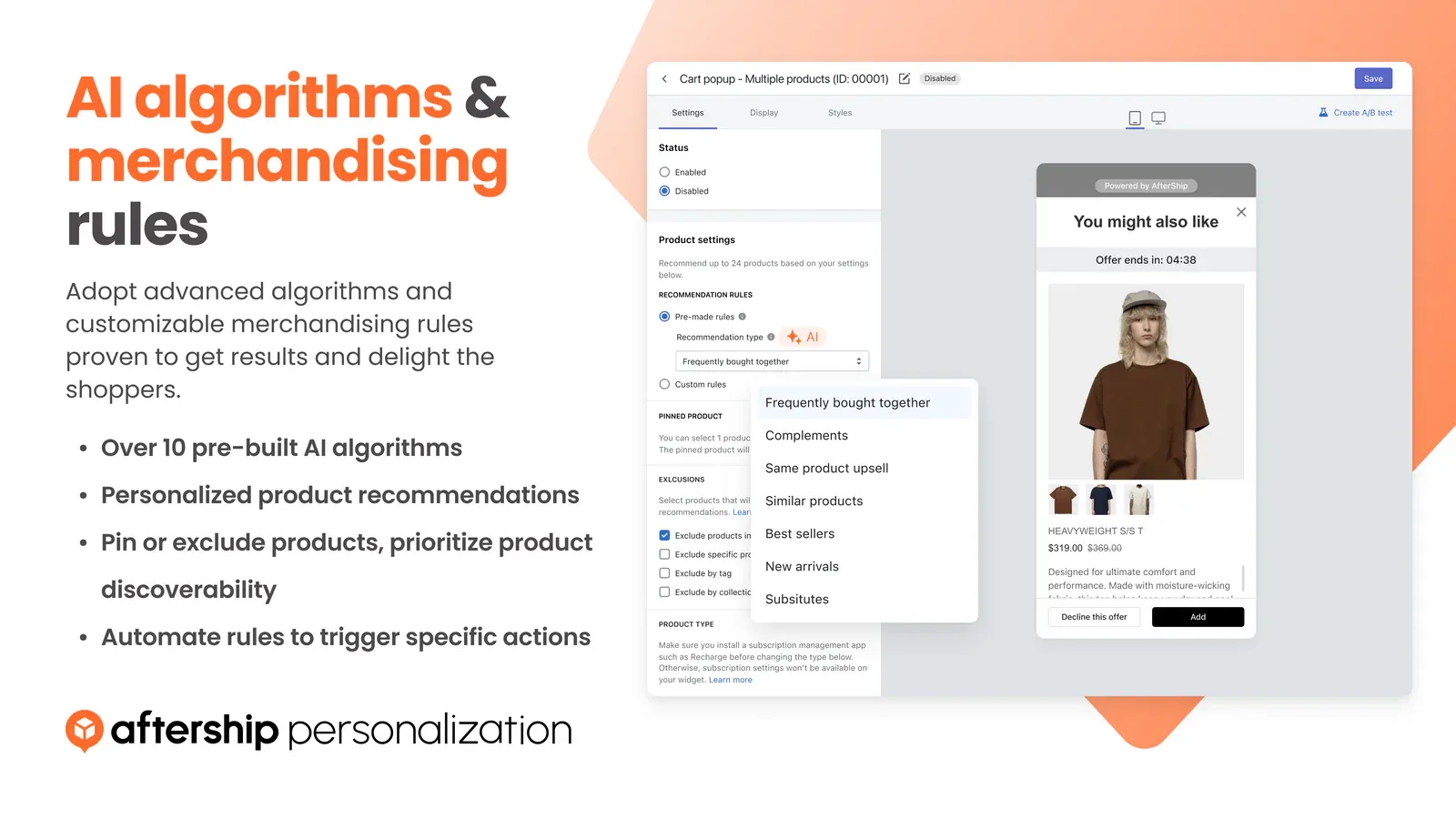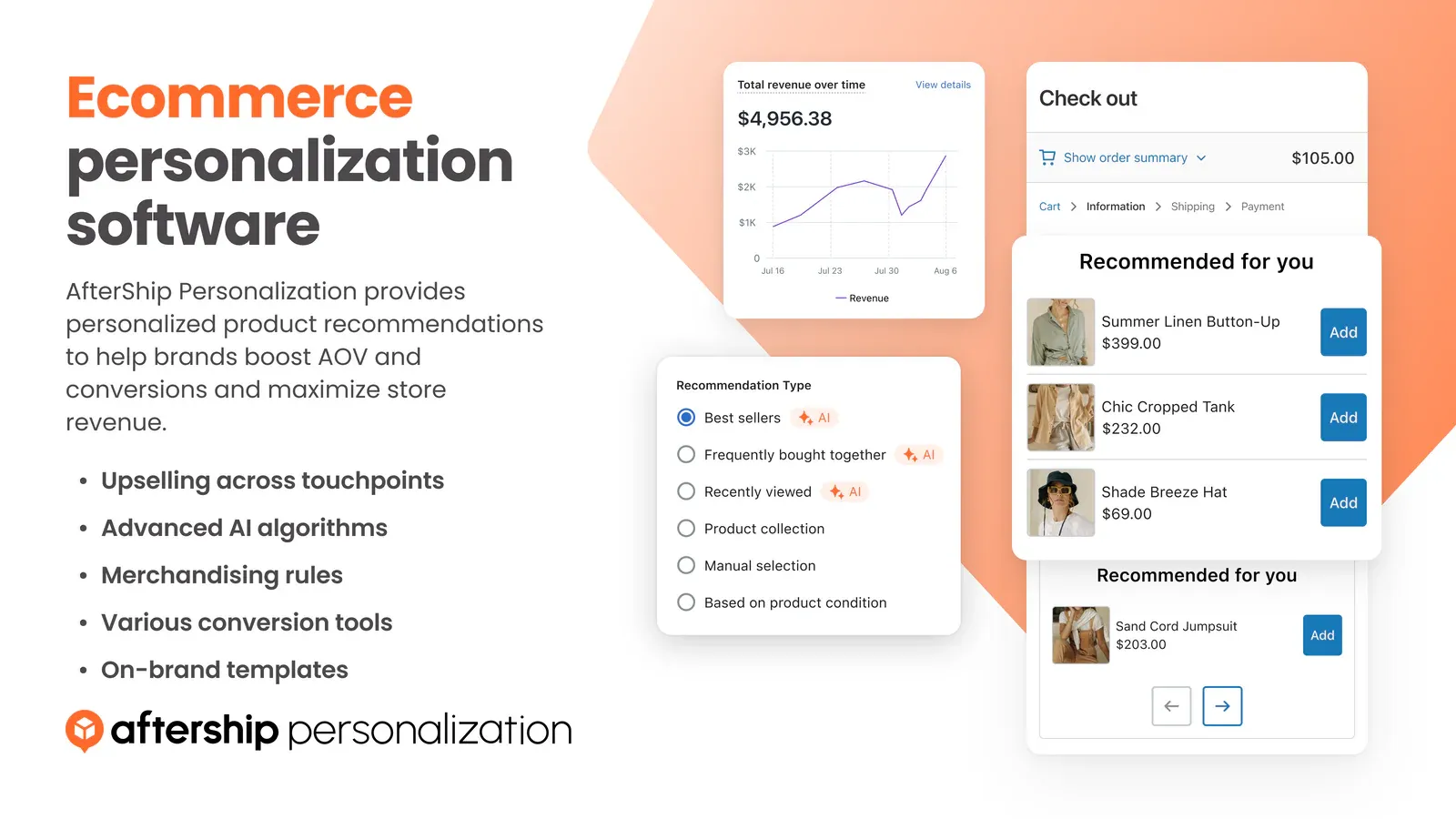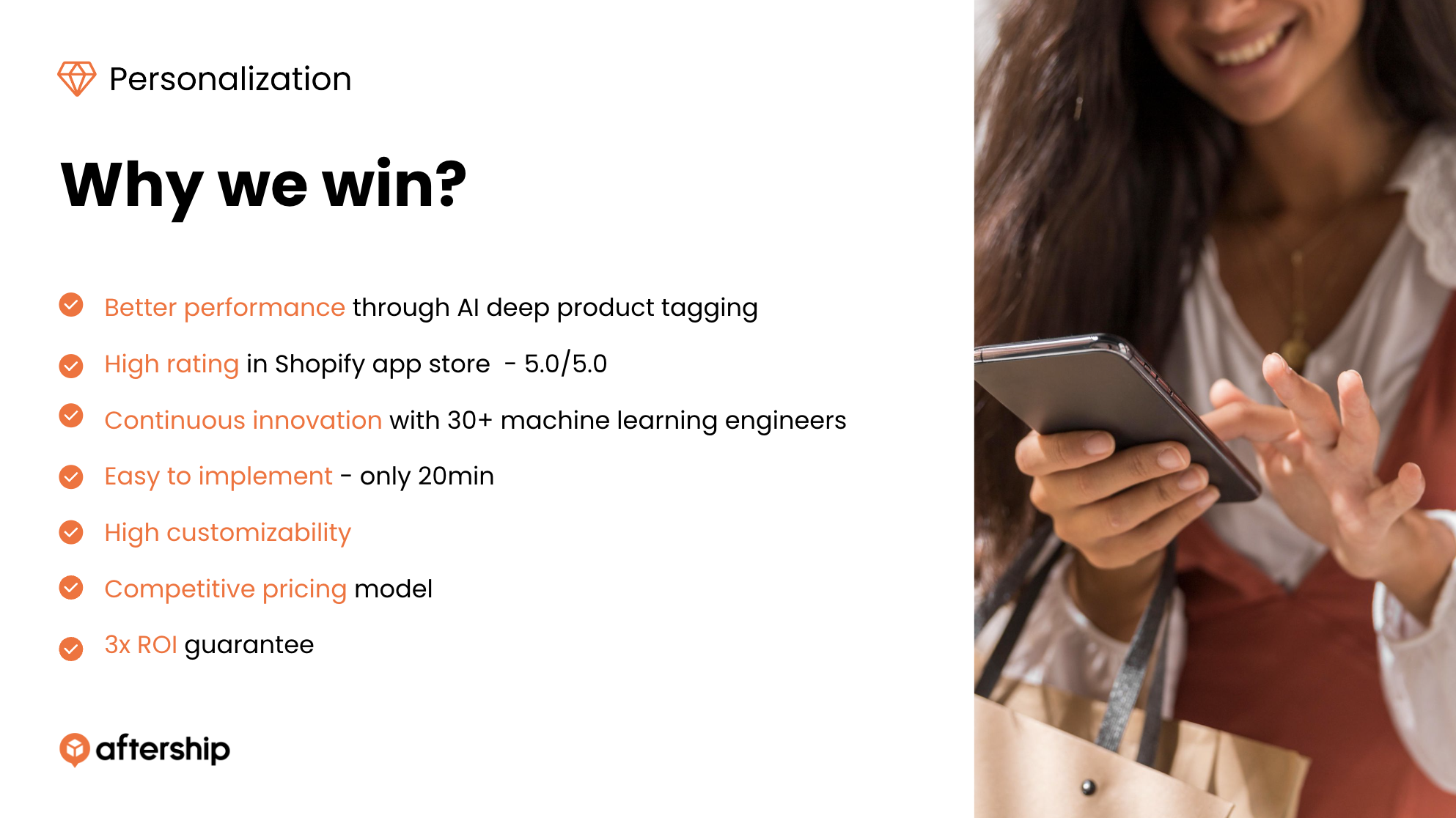Guide to Personalized Product Recommendations
Discover actionable personalized product recommendations to implement in your store, and create a shopping experience that result in customer satisfaction.

Ever felt like your eCommerce store is missing a little something? Customers may browse your online stores but not buy. You may wonder, "Why aren't my painfully curated products selling?" The answer might lie in the lack of personalized product recommendations.
In this guide, we will walk you through the ins and outs of personalized product recommendations. You will learn how you can enable data to create personalized shopping experiences that will delight your customers and boost your bottom line. Ready to transform your eCommerce strategy? Let us begin our trip!
What is a personalized product recommendations?
A personalized product recommendation is a tailored suggestion made to customers based on their unique preferences, browsing history, and purchasing behavior. It shall entail using data-driven insights in offering things that are most likely to attract each shopper.
Think of this in terms of having a personal shopper who knows your taste and needs, and who guides you through the things you are going to love. All of this probably makes for an enriched experience for the shopper and maximizes the chances for conversion and customer satisfaction.
Why use personalized product recommendations in your store?
In today's aggressive setting of eCommerce, differentiation holds major significance. It’s not enough to offer good products; instead, one needs to create a personalized shopping experience that would keep your customers coming back repeatedly. One of the most efficient ways through which this aspiration might turn into reality is effective product recommendations that are very personalized. Here are four compelling reasons to invest in this strategy:
- Increased AOV and revenue: After getting personalized recommendations, there is a chance that one will add more items to his or her cart and increase your overall sales.
- Improved customer experience: Personalized recommendations make shopping easier and more enjoyable, hence fostering a positive relationship between your brand and customers.
- Higher conversion rates: Offer customers something that will interest them, and the chances of browsers becoming buyers are higher.
- Increased customer lifetime value: Once they experience a personalized, fun shopping experience, customers will most likely come back to your store to buy more goods and ensure increased lifetime value for the business.
How can personalization be utilized to recommend products to customers?
There are several ways to utilize personalization techniques in recommending products to the customer:
1. Collecting data:
- Demographic data: Collect general information such as age, sex, geographic location, and salary group.
- Behavioral data: Monitor the activities on your website or application; this would include visiting pages, time spent, viewed, or purchased products.
- Transactional data: Past purchase history analysis to comprehend trends buying patterns and preferences.
Data sources
- Website analytics: These can be gathered using tools like Google Analytics for a customer behavioral analysis.
- Customer surveys: Research the customers' preferences and satisfaction by use of customer surveys.
- Social media: Consume the conversations on social media to generate insights on customer interests and sentiments.
Personalization in recommending products involves suggestions based on a particular customer's tastes, behaviors, and interactions. Following are some methods of efficiently implementing personalization for customer product recommendations:
2. Segmentation
- Group customers together by things they have in common, like how often they are buying or what type of products they like, etc.
- Put together some customer profiles, or personas, to represent different customer groups.
3. Recommendation algorithms
Collaborative filtering
- User-based collaborative filtering: Recommend products based on user similarities.
- Item-based collaborative filtering: Products similar to ones a customer liked/purchased previously.
Content-based filtering
- Product attributes: In case customers get interested in certain product attributes, recommend similar products.
- User profiling: Detailed user profiling should be done based on user preferences and products that match these profiles recommended.

Hybrid methods
- Combining algorithms: Combine collaborative and content-based filtering algorithms to improve recommendation accuracy.
4. Machine learning and AI
Predictive analytics
- Predictive models: Develop machine learning models that predict what customers would want to do in the future from the history of the context.
- Recommendation engines: Implement AI-driven recommendation engines that continuously learn and adapt to customer preferences.
Real-time personalization
- Dynamic content: Provide real-time, personalized content and suggestions while your customers are most engaged with your service.
- A/B testing: Experiment and iterate on various recommendation strategies to drive improvement in their impact.
6. Monitoring and Optimization
Performance metrics
- Click-Through rate (CTR): This would reflect the efficacy of your product recommendations.
- Conversion rate: The conversion of your personalized recommendations would translate to express their impact on sales.
- Customer feedback: Obtain customer feedback and analyze it for the fine-tuning and enhancement of the recommendation strategy.
Continuous improvement
- Data analysis: Periodically analyze data to understand trends and changes in personalization strategies.
- Algorithm updating: Recommendation algorithms need to be updated at regular periods since customer preferences are subject to change.
Where can you add product personalization to your website?
Embed the best product recommendations at the right places in your website user interface to help improve customer experience and drive more conversions. Here are some of the main areas where personalization of products can be applied:
Home page: This will be the first point of contact for users. Therefore, personalized recommendations should be incorporated here to keep visitors engaged with relevant products immediately after entering, based on what they are viewing or have purchased.
Category pages: These pages are very helpful to the users in their search. Show personalized recommendations across categories so that users will find, across categories, products that better fit their interests and make their shopping journey seamless.
Product pages: You can add sections like "Customers Also Viewed" or "Fellow Products" to the product pages and give the customer other items of interest, hence influencing them to navigate and probably add more items to their cart.
Shopping cart: You can add a custom upsell/cross-sell to the shopping cart, recommending products customers often buy together with the contents of their cart. This can increase the average order value.
Search research: Personalization of search results based on a user's actions and likes would mean they would find what they want easily. Showing the most relevant product at the top would make searching easier for the user.
Email campaigns: Not only your website can give happiness to your customers. Email campaigns help you retarget customers and return them to your site. Adding products based on past purchases or browsing history brings better open and conversion rates. You can use AfterShip Email in combination for even better results!
Best practice of personalized product recommendations
An effective solution delivering actionable insights is of extreme importance for measuring the real efficacy of your recommendation strategy. The following are the requirements or must-haves for a robust product recommendation system:
- Shopify all-in-one checkout solution: Seamless integration will let you display personalized recommendations during checkout for maximum upsell and cross-sell in your Shopify Store.
- Upsell scenario: The ability to construct upsell scenarios, considering customer behavior, purchase history, and cart content, to provide relevant and compelling product suggestions.
- Customize design: The flexibility to customize the design and layout of your product recommendations for brand consistency and seamless integration within the aesthetics of the store.
- AI engine: A robust AI engine learning continuously from customer data and behavior that provides, with each passing day, increasingly accurate and relevant recommendations.
- Rule-based engine: A rule-based engine enables the setting of clear rules and conditions for the displaying of recommendations and thus provides the exact control one would want over the customer experience.
- AB testing & dashboard: Built-in AB testing and comprehensive dashboard views with granular analytics on the performance of recommendations, conversion rate, and revenue impact.
- AI ability: State-of-the-art AI analyzes customer behavior and preferences to purchase patterns and delivers very personalized, contextual recommendations.
- Enterprise service: Enterprise-grade services scaling and reliable to hold high volumes of traffic and complex data processing requirements.
- Industrial solution: Personalized industry-specific solutions for the unique needs of your business, ensuring the best performance and relevance for your target audience.
| Category | Feature | AfterShip Personalization |
|---|---|---|
| Recommendation | Shopify Checkout all-in-one solution | ✅ |
| Upsell scenario | ✅ | |
| Customize design | ✅ | |
| AI engine | ✅ | |
| Rule engine | ✅ | |
| AB testing & Dashboard | ✅ | |
| AI ability | ✅ | |
| Enterprise service | ✅ | |
| Industrial solution | ✅ |
By integrating these essential components, AfterShip Personalization can assist you in developing a robust product recommendation system that boosts sales, enhances customer satisfaction, and provides actionable insights for continuous improvement.

Conclusion
AfterShip's Personalization solution has enabled numerous businesses across various industries to implement successful personalized product recommendation strategies, resulting in significant revenue growth and improved customer experiences. One notable case is that of e-commerce merchant DIME Beauty.
Challenge DIME Beauty facing
High customer acquisition costs vs. Low return on ad spend (ROAS)
Key strategies and results by using AfterShip Personalization
| Strategy | Result |
|---|---|
| Implemented 'Frequently Bought Together' AI algorithm in cart drawer | 45% increase in AOV |
| 4.5% upsell order conversion | |
| 21% boost in AOVCheckout Stage | |
| Recommended products frequently bought together Result | 47% increase in AOVPost-Purchase Stage |
| Leveraged AI-generated content | 4% upsell order conversion |
| Used conversion tools like Countdown Timer and Free Shipping Bar | 51% increase in AOV |
| Overall Impact | 5% revenue boost from upsells |
| 60x return on investment (ROI) |




Comments ()